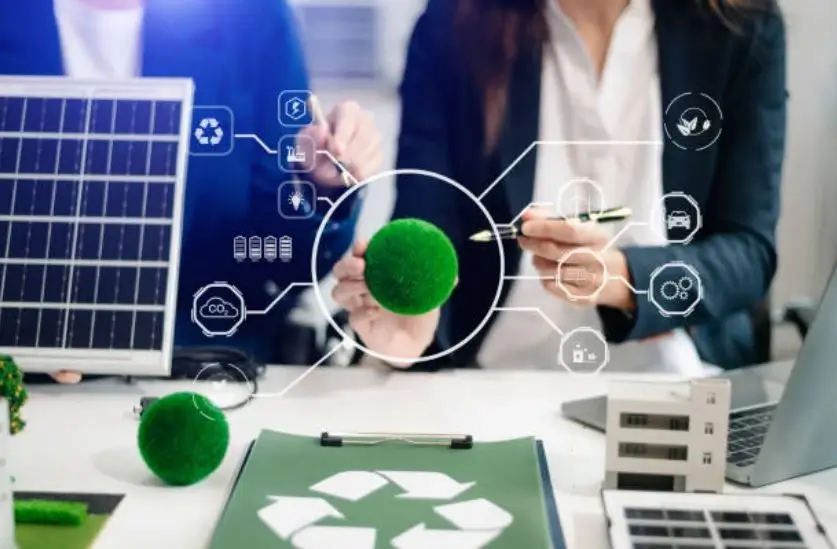Introduction: Before discussing about the future of enviromment. We must know about Natural Enviromment, the natural environment can be described as the basis of life on the given planet. which is the Earth, where human beings rely on resources like air, water, and food, among others. Nevertheless, much has been done to the detriment of this planet by humans, which has resulted in severe environmental issues.
From the discussion, it is evident that it is essential to understand such challenges and work on the organization to find sustainable solutions for the sake of future environment generations.
The Current State of the Natural Environment
The natural environment in Earth is under much strain through pollution, deforestation, global warming, and population explosion. The environment is degrading, with the capacity to reduce ecosystem and different species’ habitats, and stability in weather patterns.
The advancements in science, technology, and industrialization, together with urbanization, led to more greenhouse gas emissions and, hence, global warming. In addition, the availability of carbon sinks has also declined due to deforestation. It becomes difficult for the planet to restore again. Unfortunately, the effects could turn into a more severe stage if immediate measures are not taken.
The Main Challenges Of The Environment Of Future

Climate Change and Global Warming:
Climate change is one of the most important environmental problems that has occupied people over the last decades. Due to the melting of ice caps due to high temperatures. There is a rise in sea level and therefore flooding of low-altitude areas.
It is getting common to experience occurrences like storms, hurricanes, drought, and events that are so hot they could even melt my heart. If the usage of carbon emitting products and fossil fuels is not checked. Then the increase in global temperatures will increase and spelling misery for the ecosystems and human habitats in the long run.
Deforestation and Biodiversity Loss:
The large-scale deforestation of the forests is a burning issue since forests are important in maintaining the balance of the ecosystem. A large number of species of animals and plants are threatened with destruction of their living space. As a result, the number of animal and plant species is decreasing. It is evident that loss of biological diversity has an influence on the food pyramid as well as in agriculture, water supply, and disease management. This trend can only be slowed down and reversed through efficient and proper practices in forestry and conservation.
Water Scarcity and Pollution:
Water supply, which is chiefly derived from freshwater, is gradually diminishing through overexploitation, pollution, and the current change in climate. Some areas are facing severe drought, and in others, water sources are a menace due to contamination.
The increased water pollution through industrial waste discharge, disposed plastics, and chemicals used in agriculture has negatively impacted water quality and usability for human and aquatic life. Some of the accurate and reliable measures include those of water conservation and control of pollution to provide adequate water sources for use by future environment generations.
Effects of Air Pollution on Health
Air pollution is therefore a major risk factor that causes respiratory diseases, heart disease, and other such diseases. Pollutants emitted through industries and vehicle exhaust terminals and fumes that are aerosols formed from deforestation all pollute the air.
It was found that prolonged exposure to air pollution has a direct relation towards causing of lung cancer and cardiovascular diseases. The public needs to embrace cleantech more in their energy consumption, while governments need to set tough environmental standards and legislation.
Predictions for the Future of the Natural Environment

Global Warming and Extreme Conditions:
To summarize, according to scientists, climate change is set to progress. And temperatures are likely to rise, thereby resulting in the occurrence of extreme weather. This means that there will be an increase in heat waves, stronger storms, and long-lasting droughts. Which will affect agriculture, human settlements and infrastructure.
Evidently, rising sea levels may lead to severe flooding of the coastal cities. Measures that would be helpful in reducing the current volume of GHG emissions can assist in reversing such changes.
Declining Wildlife Populations and Habitat Loss:
This has contributed to the dire levels of extinction witnessed in the current world. With some animals facing extinction due to wanton hunting, loss of their natural habitats, and the effects of global warming. Lack of effort in the process of conservation will lead to a high number of species becoming extinct. Leading to an imbalance of ecosystems. Conserving the scene and ensuring compliance with wildlife conservation laws shall be required to stop the growing rate at which the species is decreasing.
Ocean Acidification and Marine Life Threats:
Increased levels of carbon dioxide cause a great concentration in the oceans, thus causing ocean acidity. This process is detrimental to the marine ecosystem, especially the coral reefs, the shellfish, and the fish. Currently, coral bleaching due to water warming has become one of the risks that affects marine life and fisheries. Limiting greenhouse gas emissions and addressing the concerns to marine life is paramount for addressing the health of the oceans.
Innovative Solutions for a Sustainable Future Environment

Renewable Energy and Carbon Reduction Strategies:
Introducing innovative ideas for adopting renewable energy like solar, wind, and hydroelectric power will help in shedding off the reliance on fossil energy, hence reducing the emission of carbon. The governments and industries should go for green power. And encourage the use of clean technologies among them. And reduce the impact of emissions on climate change.
Reforestation and Conservation Efforts:
Afforestation can be used as a measure to address climate change and the conservation of the affected ecosystems. Working as a reforestation process by enabling it to reduce the amounts of carbon dioxide in the atmosphere. Prevent soil erosion, and protect wildlife habitat. National parks and wildlife reserves serve as conservation measures. That are necessary in addressing issues of diversification of species and balance in the environment.
Sustainable Agriculture and Food Systems:
They include crop rotation, organic farming, and precision farming as some of the ways through which sustainability in farming can be attained. Some strategies that begin with minimizing food wastage, encouraging plant-rich diets, and supporting local agriculturists would help in the attainment of better relations between people and a healthy environmental balance.
Green Technology and Eco-Friendly Innovations:
Technologies such as electric cars, eco-friendly products, and waste management solutions through waste products have the potential to lower the adverse impacts made on the environment. Energy-conserving buildings, efficient utilization of energies in coping with day-to-day life, innovations in packaging, and even designing smart city structures are important tools for the future.
The Role of Governments and Policies in Environmental Protection
Premises for implementing polices that aim to support the environment can only be provided by governments. These aspects, such as carbon emission control, the restriction of deforestation practices, and the regulation of industrial waste, also have the potential to allow limits on harms caused to the environment to be put in place. This policy paper showed that actions such as the Paris Agreement. Which has been signed globally, help in mitigating climate change.
This is where awareness creation and such incentives to promote more sustainable endeavours. And adoption of environmentally friendly practices can be put in place by concerned authorities.
Individual Actions to Support Environmental Sustainability
I understand that the problem is with all of us. And each human being can make a change by making some changes in their day-to-day life. This means that plastic use, water conservation, use of public transport, and recycling can affect the environment in a huge way.
Consuming and opting for environment-friendly products and brands puts pressure on firms to follow environmentally friendly policies. That is why one can culminate in creating awareness. And educating the public on the issues with an aim of eliciting action towards a better environment.
Conclusion:
It is for this reason that the actions being taken today matter so much when it comes to the natural environment. However, the issues are immense, and comprehending the means to generate a positive change in its direction to be more sustainable is the solution, including policies of governments and personal lives.
There are a number of ways to safeguard future generations of environment. Which include the use of renewable energy, conserving energy, embracing innovation, and use of green energy. Thus, it was our challenge to join our strengths and make a coordinated effort to change the future of our environment.
FAQs:
Q1: What are considered the largest problems of the environment in the present world?
A: Global warming, pollution, adverse changes in weather and water supply, and deforestation are some of the prominent problems.
Q2: The following are some of the ways through which air pollution impacts the health of human beings?
A: It leads to the development of respiratory diseases, diseases of the heart, and other chronic illnesses resulting from dangerous pollutants.
Q3: What is the involvement of the governments in the protection of the environment?
A: They formulate and put into practice policies, laws, and treaties that help in minimizing the effect of environmental degradation and enhancing sustainability.
Q4: In what ways can people change, and what can they do to enhance positive impact on the future for the degree of sustainability?
A: By minimizing wastage, preventing the depletion of natural resources, using resources that have less impact on the environment, and making people aware of the importance of protecting the environment.
Q5: Why is biodiversity important?
A: Biodiversity sustains ecological stability, food chain, climate. And helps in maintaining diseases and preventions needed for human beings’ existence and for the well-being of the earth.


